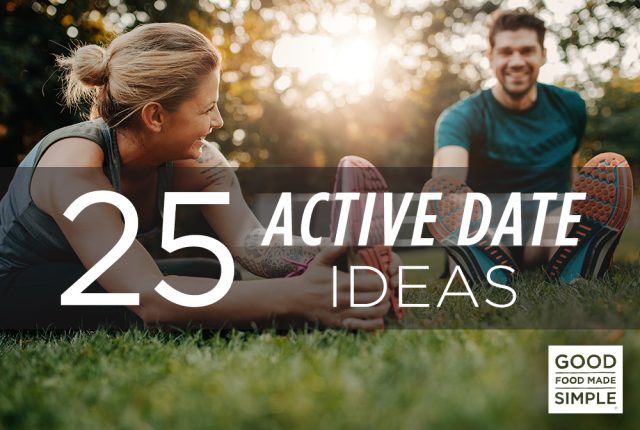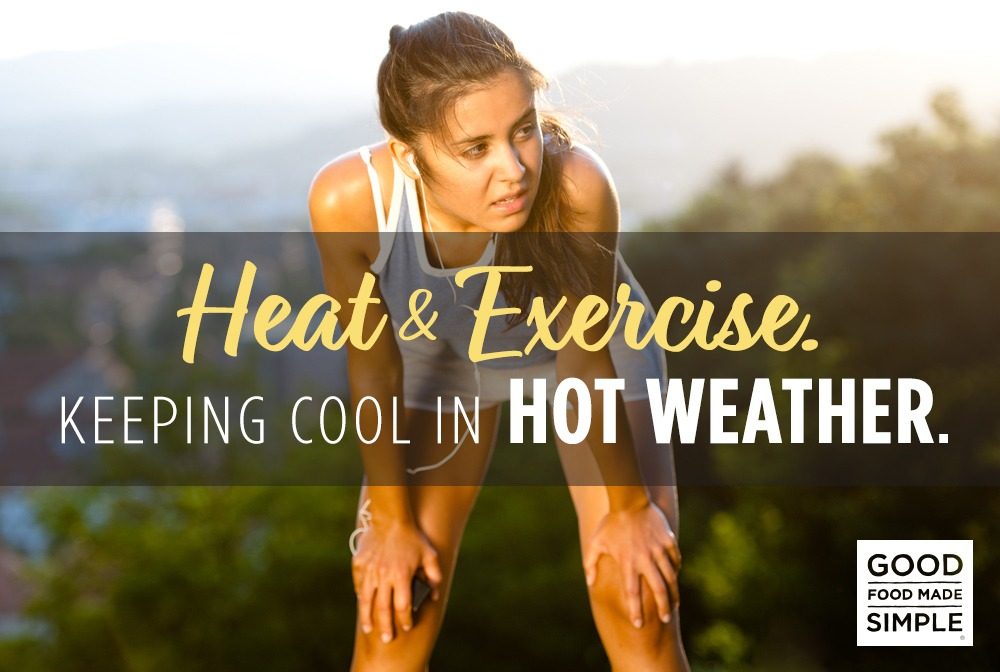
25 Active Date Ideas
While going on dates can certainly be fun, a typical night out with a romantic partner often ends up being focused on eating ...
read more
While the summer season is loved by many, the hot temperatures don’t always fare well with outdoor exercise. In certain situations, it can be downright dangerous to workout in the heat. Having said that, there are active measures you can take to keep cool during the summer months, along with warning signs to look out for if you’ve pushed it to far. We’ll break down all this — and more — now.
When you exercise in hot temps, the heat places extra stress on your body since the air temperature, humidity, and the exercise itself all contribute to increasing your core body temperature.
To help keep cool, your body will send more blood to circulate throughout your skin. While this initially is helpful, it also leaves less blood for your muscles and can lead to an increased heart rate. If it’s extra humid out, your sweat won’t actively evaporate from your skin which can push your body temperature even higher.
To avoid your body temperature from increasing to dangerous levels, follow these tips to stay safe (and keeping cool in hot weather) all summer long.
Check the Forecast
It’s important to know exactly how hot it’s going to be when you exercise. There’s a big difference between going for a run at 75 degrees with low humidity and 85 degrees at high humidity! As we mentioned before, exercising in warm weather will increase your core body temperature. If your temp gets too high, serious health risks could occur.
It’s not just what the thermometer reads, either. When the humidity is low, your body is better at cooling itself (since sweat won’t evaporate) and you can safely run in higher temperatures. When the humidity is high, your sweat doesn’t evaporate as quickly and you body can’t cool itself as effectively, making your core temperature rise. So check the humidity, too: If it’s over 82 degrees out and the humidity has reached 90-100 percent, skip the outdoor workout. However, is the humidity is 40 percent or lower, you can safely exercise outdoors until the thermometer reads 90 degrees.
Also check for cloud cover, sun, or chances of rain and thunderstorms. While the rain might sound refreshing, that means the humidity level is high. Cloud cover helps with the heat, but you should still wear sunscreen just as you would with the sun beating down overhead.
Dress Smart
What you wear really matters when you’re working out in the heat. If it’s warm, choose clothes that are lightweight, can wick sweat, and are light-colored. The darker the color and heavier the materials means the shirt or shorts could absorb more heat and raise your internal body temperature. Remember: You can always shorten your workout — both how long you exercise and how intense the workout is. Keeping cool in hot weather should always be the most important thing for your safety.
Hydrate Before, During, and After
Staying hydrated is a key element of safely exercising in the heat and keeping cool. If you’re planning on exercising later in the day, drink enough fluids throughout your morning and afternoon. This can obviously look like water, but could also mean chomping on watermelon, tomatoes, celery, and other fruits and veggies that are rich with water.
Bring water with you while exercising, too; you can carry a handheld water bottle or a hydration pack. If it’s humid, add electrolytes to your water to replace the sodium and other nutrients that you sweat out. After the workout, chug a big glass of water and continue to hydrate in order to replace the water weight you may have lost while working out in the heat.
Avoid the Midday Sun
Whenever possible, choose to exercise in the morning or evening, when it will probably be a lot cooler out with the sun not as strong. For added coolness, try to workout in the shade or do a workout in a pool!
Wear the Right Protection
Before every outdoor workout, apply water-resistant sunscreen to any exposed skin (including things like ears and elbows!) and make sure it’s at least SPF 30 and says “broad spectrum” or “UVA/UVB protection” on the label. Place it on about 30 minutes before going out and read the label to know how often you need to reapply. Wear UV-blocking sunglasses and a hat to keep your face from getting direct sunlight as well.
Have a Plan B.
If you’re concerned about the heat and humidity, it never hurts to take an outdoor workout inside. Head to a gym, workout class, or even climb stairs inside a building that has the air conditioning blasting.
Exercising in hot and humid weather can put you at risk of heat exhaustion or heat stroke. Heat exhaustion is a less-dangerous form of a heat-related illness that can form after being exposed to high temperatures for a few days. It can also be caused from dehydration. Signs of heat exhaustion include heavy sweating, muscle cramps, fatigue, dizziness, headaches, and nausea or vomiting.
If heat exhaustion is untreated, it could lead to a heat stroke, which is a serious heat-related illness that needs to be addressed as soon as possible. A heat stroke occurs when the body temperature rises up to 105°F or higher. Symptoms of heat stroke include:
If you see someone with any warning signs of heat stroke, call 911 immediately.

25 Active Date Ideas
While going on dates can certainly be fun, a typical night out with a romantic partner often ends up being focused on eating ...
read more
12 Smart Food Swaps For A Healthy Heart
February is American Heart Month, and one of the best ways to maintain good heart health is to watch what you eat. Instead of...
read more
Starting the New Year With the ‘Right’ Mindset
With the holiday finally over and the new year upon us, I’d be shocked if you haven’t thought about New Year's Resoluti...
read more